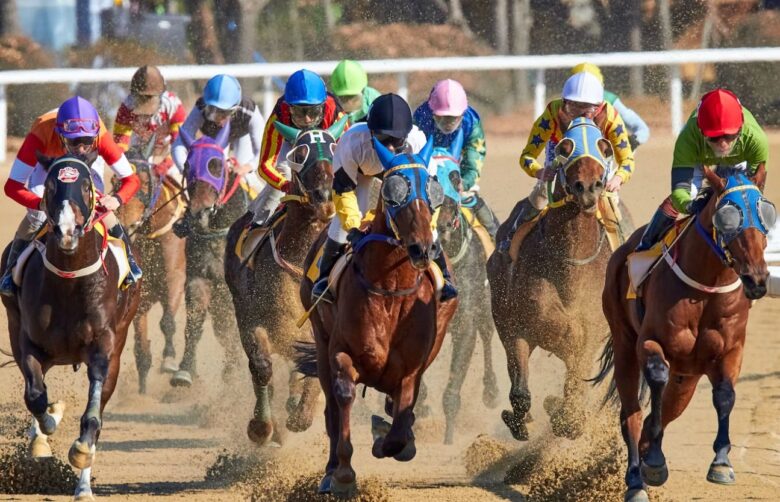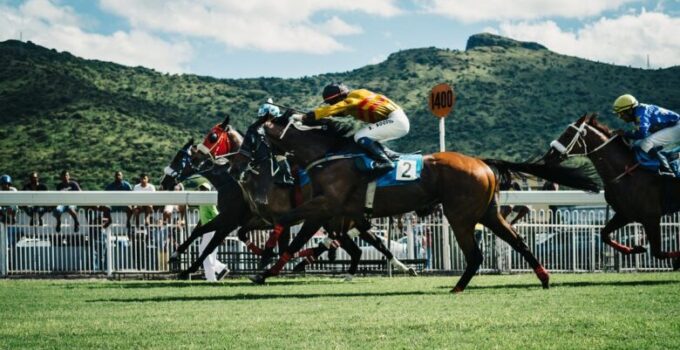Artificial intelligence (AI) is one of the fastest growing technological advances in the post-millennium era. From healthcare to autonomous vehicles to online banking and digital marketing, it seems there is limitless potential with AI technology.
Can AI even be used to refine betting strategies in the world of horse racing? A strategy is essential when betting on horse races, given the variables involved in terms of the racecourse, the distance, the weather and even the temperament of the thoroughbreds involved.
The general point of strategies is to help find value selections on horses in the hours, days or weeks leading up to the biggest races. For those who feel safer backing pre-race favorites rather than value outsiders with their own money, it may be possible to secure free bet credits with online sportsbooks. This gives you a risk-free punt on the value picks that any AI system highlights.
The US online sports betting industry is growing at a rapid rate since the federal overruling of PASPA in 2018, paving the way for individual states to license and regulate their own sports betting markets, including horse racing. Comparison portals like OddsChecker can arm bettors with a list of the most reputable welcome promotions to work through and use at their leisure.
When it comes to AI for horse racing betting strategies, there is nothing formalised as yet, but that hasn’t stopped one or two individuals from exploring the possibilities in recent years. Below, we explore their findings to gauge just how soon AI could become part of the horse racing betting mix.
The story of Bill Benter

https://images.unsplash.com
Pennsylvanian gambler and philanthropist Bill Benter was one of the first individuals to successfully lean on computer software to win consistently in the horse racing markets.
Benter was a maths guru from a young age and set about utilising his skills in the world of gambling. He first prevailed at the blackjack tables before encountering a man named Alan Woods, a man with a similar thirst for gaming. Benter and Woods utilised their complementary skills in horse racing and computer engineering to become partners in horse racing betting.
The duo made the switch to Hong Kong in 1984, where they would begin betting with $150,000 in cash. Benter had researched all there was to know about horse racing. He was a regular at the Gambler’s Book Club in Las Vegas and owned just about every book that was worth having on the sport. Hong Kong was a great place for Benter and Woods to test the water. Horse racing was exploding in popularity there, with some $10 billion wagered annually at meetings.
Over time, Benter developed an algorithm that could throw out accurate predictions on races. Both he and Woods came together twice weekly to pour over the racing form to see what predictions were likely. This was by no means plain sailing. In fact, the duo lost no less than $120,000 of their $150,000 starting bank within the first 12 months, with Benter’s algorithm demonstrating plenty of teething problems.
Benter then went to Atlantic City to play blackjack for a couple of years, before returning to Hong Kong in 1988 with a more sophisticated algorithm. This time, the algorithm monitored no less than 20 variables, which Benter believed would be sufficient to determine the “true” value of each horse in a race.
The turning point
Benter’s vision for his algorithm was to find an edge against the bookmakers. If the bookies had a horse priced at odds of +400, but its real odds were more like +250, he would take +400 as a value price.
Within 12 months of his return to Hong Kong, Benter recouped his losses and then some – bagging $600,000. What was the secret? Benter believed the new variable of rest days between races had proven particularly beneficial to pinpoint horses with optimal stamina and minimal fatigue.
The algorithm was taken to even greater levels when the Hong Kong Jockey Club began to announce their betting odds to the general public in the hours and days leading up to big race meetings. Instead of creating his own “tissue prices” from scratch, Benter used these odds as a basis for his algorithm. Sure enough, the year after its implementation, Benter raked in over $3,000,000 in winnings.
Fast forward to the turn of the millennium and Benter’s algorithm was starting to account for 120+ variables per race. Amazingly, Benter decided to call it a day in Hong Kong in 2001 after making his millions.
His final bet? A trifecta, correctly predicting the first three horses, scooping $118,000,000. Benter opted to leave his ticket unclaimed, with the funds eventually donated to charity by the Hong Kong Jockey Club.
Craig S. Smith’s experiment with no-code AI
Craig S. Smith is a former correspondent for the New York Times. He still freelances occasionally, discussing the impact of AI. Smith also has a podcast called Eye on AI, which is centred squarely on machine learning. Smith recently blogged about his experience with a “no-code AI” platform called Akkio.
The founder of Akkio approached Smith, allowing him to user their AI portal to place bets on horse races.
Akkio was by no means created with horse racing betting strategies in mind. In fact, it’s aimed at small businesses with limited budgets to hire data analysts and scientists. Its co-founder, Jon Reilly, told Smith that Akkio could develop a bespoke machine learning model and make accurate horse racing predictions “in 10 minutes”.
Akkio crunches all kinds of data, but the key to any successful horse racing algorithm is the calibre of data. Chris Rossi of TimeformUS was the perfect candidate for this experiment. He sent Reilly hundreds of rows of training data on horses scheduled to run in ten races for Saratoga in the near future.
Before the test, Rossi expected to see the hastily arranged algorithm pick two winners out of ten races. Akkio surpassed even Rossi’s expectations, hand-picking six winners of the ten races, resulting in a potential return on investment of 140%.
Making vast sums of AI-assisted money has long been the aim ever since the IBM-developed Deep Blue outsmarted chess legend, Gary Kasparov, way back in 1997. Perhaps the new wave of no-code AI platforms could open the way for horse racing experts to build their own models, without having to invest in a backroom department of data scientists.




